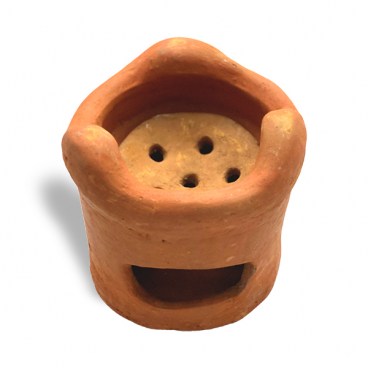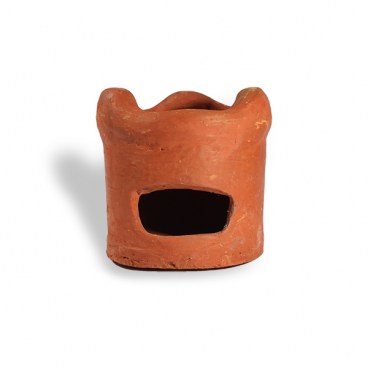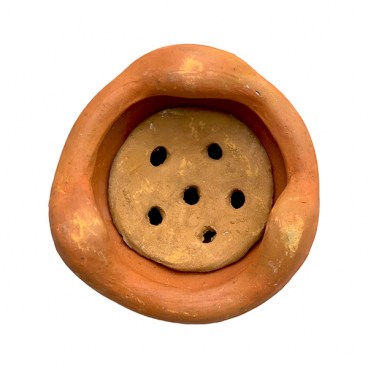The Kalan, also known as a Kalan de Uling, Ulingan, or Pugon, is a traditional earthenware stove used in the Philippines together with the Palayok to cook over fire. It can be used with charcoal or wood fed through the hole in the front and the Palayok placed on the top. Its name is derived from the Filipino term “uling” which means “charcoal”.
Today, even though gas and electric stoves are prevalent in the modern kitchen, some “pinoys” like to go back to the basic and use the Kalan due to the fact that the cooking over burning of wood or charcoal adds a different smell and flavor to the food.
| |
|
| Item Number: |
PHL-7425-08 |
| Dimensions (inches): |
|
| Length: |
8 |
| Width: |
8 |
| Height: |
8 |
| Diameter: |
5 |
| How we measure |
 |
Apperance
As with most handmade products by artisans around the world, the pieces may have slight imperfections in the form or finish of the materials. Sometimes sizes of same model pieces may also vary slightly, however, these imperfection do not compromise the aesthetics or functionality of the pieces and are considered normal and to be expected.








 Palayok - Filipino Clay Pot
Palayok - Filipino Clay Pot